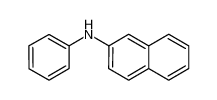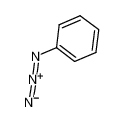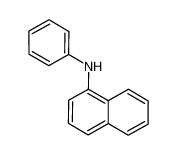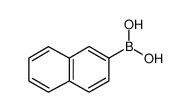| Product name | N-Phenyl-2-naphthylamine |
|---|
| Product number | - |
|---|---|
| Other names | 2-Naphthalenamine, N-phenyl- |
| Identified uses | For industry use only. |
|---|---|
| Uses advised against | no data available |
| Company | MOLBASE (Shanghai) Biotechnology Co., Ltd. |
|---|---|
| Address | Floor 4 & 5, Building 12, No. 1001 North Qinzhou Road, Xuhui District, Shanghai, China |
| Telephone | +86(21)64956998 |
| Fax | +86(21)54365166 |
| Emergency phone number | +86-400-6021-666 |
|---|---|
| Service hours | Monday to Friday, 9am-5pm (Standard time zone: UTC/GMT +8 hours). |
Skin irritation, Category 2
Eye irritation, Category 2
Skin sensitization, Category 1
Carcinogenicity, Category 2
Hazardous to the aquatic environment, long-term (Chronic) - Category Chronic 2
2.2 GHS label elements, including precautionary statements| Pictogram(s) |    |
|---|---|
| Signal word | Warning |
| Hazard statement(s) | H315 Causes skin irritation H319 Causes serious eye irritation H317 May cause an allergic skin reaction H351 Suspected of causing cancer H411 Toxic to aquatic life with long lasting effects |
| Precautionary statement(s) | |
| Prevention | P264 Wash ... thoroughly after handling. P280 Wear protective gloves/protective clothing/eye protection/face protection. P261 Avoid breathing dust/fume/gas/mist/vapours/spray. P272 Contaminated work clothing should not be allowed out of the workplace. P201 Obtain special instructions before use. P202 Do not handle until all safety precautions have been read and understood. P273 Avoid release to the environment. |
| Response | P302+P352 IF ON SKIN: Wash with plenty of water/... P321 Specific treatment (see ... on this label). P332+P313 If skin irritation occurs: Get medical advice/attention. P362+P364 Take off contaminated clothing and wash it before reuse. P305+P351+P338 IF IN EYES: Rinse cautiously with water for several minutes. Remove contact lenses, if present and easy to do. Continue rinsing. P337+P313 If eye irritation persists: Get medical advice/attention. P333+P313 If skin irritation or rash occurs: Get medical advice/attention. P308+P313 IF exposed or concerned: Get medical advice/ attention. P391 Collect spillage. |
| Storage | P405 Store locked up. |
| Disposal | P501 Dispose of contents/container to ... |
none
3.Composition/information on ingredients 3.1 Substances| Chemical name | Common names and synonyms | CAS number | EC number | Concentration |
|---|---|---|---|---|
| N-Phenyl-2-naphthylamine | N-Phenyl-2-naphthylamine | 135-88-6 | none | 100% |
Consult a physician. Show this safety data sheet to the doctor in attendance.
If inhaledFresh air, rest.
In case of skin contactRemove contaminated clothes. Rinse and then wash skin with water and soap.
In case of eye contactFirst rinse with plenty of water for several minutes (remove contact lenses if easily possible), then refer for medical attention.
If swallowedRefer for medical attention .
4.2 Most important symptoms/effects, acute and delayedExposure Routes: inhalation, skin absorption, ingestion, skin and/or eye contact Symptoms: Irritation; leucoplakia; acne, hypersensitivity to sunlight; [potential occupational carcinogen] Target Organs: Eyes, skin, bladder (NIOSH, 2016)
4.3 Indication of immediate medical attention and special treatment needed, if necessaryTREATMENT: SYMPTOMATIC & SUPPORTIVE.
5.Fire-fighting measures 5.1 Extinguishing media Suitable extinguishing mediaFires involving this compound can be controlled using a dry chemical, carbon dioxide or Halon extinguisher.
5.2 Specific hazards arising from the chemicalLiterature sources indicate that this chemical is combustible.
5.3 Special protective actions for fire-fightersWear self-contained breathing apparatus for firefighting if necessary.
6.Accidental release measures 6.1 Personal precautions, protective equipment and emergency proceduresUse personal protective equipment. Avoid dust formation. Avoid breathing vapours, mist or gas. Ensure adequate ventilation. Evacuate personnel to safe areas. Avoid breathing dust. For personal protection see section 8.
6.2 Environmental precautionsPersonal protection: P2 filter respirator for harmful particles. Do NOT let this chemical enter the environment. Sweep spilled substance into covered containers. If appropriate, moisten first to prevent dusting. Carefully collect remainder. Then store and dispose of according to local regulations.
6.3 Methods and materials for containment and cleaning upPick up and arrange disposal. Sweep up and shovel. Keep in suitable, closed containers for disposal.
7.Handling and storage 7.1 Precautions for safe handlingAvoid contact with skin and eyes. Avoid formation of dust and aerosols. Avoid exposure - obtain special instructions before use.Provide appropriate exhaust ventilation at places where dust is formed. For precautions see section 2.2.
7.2 Conditions for safe storage, including any incompatibilitiesSeparated from oxidants....MATERIALS WHICH ARE TOXIC AS STORED OR WHICH...DECOMP INTO TOXIC COMPONENTS DUE TO CONTACT WITH HEAT...SHOULD BE STORED IN COOL, WELL-VENTILATED PLACE, OUT OF DIRECT RAYS OF SUN, AWAY FROM AREAS OF HIGH FIRE HAZARD, &...PERIODICALLY INSPECTED & MONITORED.
8.Exposure controls/personal protection 8.1 Control parameters Occupational Exposure limit valuesNIOSH considers N-phenyl-beta-naphthylamine to be a potential occupational carcinogen. [Note: Since metabolized to beta-Naphthylamine].
NIOSH usually recommends that occupational exposures to carcinogens be limited to the lowest feasible concn.
Biological limit valuesno data available
8.2 Appropriate engineering controlsHandle in accordance with good industrial hygiene and safety practice. Wash hands before breaks and at the end of workday.
8.3 Individual protection measures, such as personal protective equipment (PPE) Eye/face protectionSafety glasses with side-shields conforming to EN166. Use equipment for eye protection tested and approved under appropriate government standards such as NIOSH (US) or EN 166(EU).
Skin protectionWear impervious clothing. The type of protective equipment must be selected according to the concentration and amount of the dangerous substance at the specific workplace. Handle with gloves. Gloves must be inspected prior to use. Use proper glove removal technique(without touching glove's outer surface) to avoid skin contact with this product. Dispose of contaminated gloves after use in accordance with applicable laws and good laboratory practices. Wash and dry hands. The selected protective gloves have to satisfy the specifications of EU Directive 89/686/EEC and the standard EN 374 derived from it.
Respiratory protectionWear dust mask when handling large quantities.
Thermal hazardsno data available
9.Physical and chemical properties| Physical state | light grey powder or crystals |
|---|---|
| Colour | NEEDLES FROM METHANOL |
| Odour | no data available |
| Melting point/ freezing point | 161°C(lit.) |
| Boiling point or initial boiling point and boiling range | 237°C/15mmHg(lit.) |
| Flammability | Combustible SolidCombustible. |
| Lower and upper explosion limit / flammability limit | no data available |
| Flash point | 92°C(lit.) |
| Auto-ignition temperature | no data available |
| Decomposition temperature | no data available |
| pH | no data available |
| Kinematic viscosity | no data available |
| Solubility | In water:Insoluble. |
| Partition coefficient n-octanol/water (log value) | log Kow = 4.38 |
| Vapour pressure | 0.005mmHg at 25°C |
| Density and/or relative density | 1.24 |
| Relative vapour density | no data available |
| Particle characteristics | no data available |
no data available
10.2 Chemical stabilityStable under recommended storage conditions.
10.3 Possibility of hazardous reactionsFIRE HAZARD: MODERATE, WHEN EXPOSED TO HEAT OR FLAME... CAN REACT WITH OXIDIZING MATERIALS.Dust explosion possible if in powder or granular form, mixed with air. If dry, it can be charged electrostatically by swirling, pneumatic transport, pouring, etc.N-PHENYL-2-NAPHTHYLAMINE may react with strong oxidizing agents . Neutralizes acids in exothermic reactions to form salts plus water. May be incompatible with isocyanates, halogenated organics, peroxides, phenols (acidic), epoxides, anhydrides, and acid halides. Flammable gaseous hydrogen may be generated in combination with strong reducing agents, such as hydrides.
10.4 Conditions to avoidno data available
10.5 Incompatible materialsOxidizers.
10.6 Hazardous decomposition productsWHEN HEATED TO DECOMP, IT EMITS TOXIC FUMES OF /NITROGEN OXIDES/.
11.Toxicological information Acute toxicity- Oral: LD50 Rat oral 8730 mg/kg
- Inhalation: no data available
- Dermal: no data available
no data available
Serious eye damage/irritationno data available
Respiratory or skin sensitizationno data available
Germ cell mutagenicityno data available
CarcinogenicityInadequate evidence of carcinogenicity in humans. Limited evidence of carcinogenicity in animals. OVERALL EVALUATION: Group 3: The agent is not classifiable as to its carcinogenicity to humans.
Reproductive toxicityno data available
STOT-single exposureno data available
STOT-repeated exposureno data available
Aspiration hazardno data available
12.Ecological information 12.1 Toxicity- Toxicity to fish: no data available
- Toxicity to daphnia and other aquatic invertebrates: no data available
- Toxicity to algae: no data available
- Toxicity to microorganisms: no data available
Using an initial concn of 100 mg/L N-phenyl-2-naphthylamine, 0 %BOD was observed after a 2 week period in a biodegradation screening test using 30 mg/L sludge(1). N-Phenyl-2-naphthylamine, initial concn of 100 ppm, exhibited a 0-29 % Theoretical BOD in a Japanese MITI test after 14 days of incubation at 25°C(2). N-phenyl-2-naphthylamine was shown to degrade to beta-naphthylamine in a screening study using activated sludge inoculum at 21°C(3). In this study, 44.2 and 9.3 %CO2 production was observed in 1 day at initial concns of 2 and 5 ppm, respectively(3). At an initial concn of 8 ppm, N-phenyl-2-naphthylamine was observed to be inhibitory to microorganisms under the same test conditions(3). Furthermore, adsorption to solids was found to occur and, hence, reduce biodegradation(3).
12.3 Bioaccumulative potentialThe BCF value for N-phenyl-2-naphthylamine was determined to be 147 with the fathead minnow (Pimephales promelas) in a 32 day exposure flow-through test of Lake Superior water at 25°C(1).
12.4 Mobility in soilAromatic amines have been observed to undergo rapid and reversible covalent bonding with humic materials in aqueous solution; the initial bonding reaction is followed by a slower and much less reversible reaction believed to represent the addition of the amine to quinoidal structures followed by oxidation of the product to give an amino-substituted quinone; these processes represent pathways by which aromatic amines may be converted to latent forms in the biosphere(4). In the absence of covalent bonding, one can estimate the adsorption potential based on the Koc value. Based on an experimental log octanol-water partition coefficient of 4.38(2) and a recommended regression-derived equation(1), the Koc value for N-phenyl-2-naphthylamine can be estimated to be 12,500(SRC). According to a suggested classification scheme(3), this Koc value indicates that N-phenyl-2-naphthylamine will be immobile in soil.
12.5 Other adverse effectsno data available
13.Disposal considerations 13.1 Disposal methods ProductThe material can be disposed of by removal to a licensed chemical destruction plant or by controlled incineration with flue gas scrubbing. Do not contaminate water, foodstuffs, feed or seed by storage or disposal. Do not discharge to sewer systems.
Contaminated packagingContainers can be triply rinsed (or equivalent) and offered for recycling or reconditioning. Alternatively, the packaging can be punctured to make it unusable for other purposes and then be disposed of in a sanitary landfill. Controlled incineration with flue gas scrubbing is possible for combustible packaging materials.
14.Transport information 14.1 UN Number| ADR/RID: UN3077 | IMDG: UN3077 | IATA: UN3077 |
| ADR/RID: ENVIRONMENTALLY HAZARDOUS SUBSTANCE, SOLID, N.O.S. |
| IMDG: ENVIRONMENTALLY HAZARDOUS SUBSTANCE, SOLID, N.O.S. |
| IATA: ENVIRONMENTALLY HAZARDOUS SUBSTANCE, SOLID, N.O.S. |
| ADR/RID: 9 | IMDG: 9 | IATA: 9 |
| ADR/RID: III | IMDG: III | IATA: III |
| ADR/RID: yes | IMDG: yes | IATA: yes |
no data available
14.7 Transport in bulk according to Annex II of MARPOL 73/78 and the IBC Codeno data available
15.Regulatory information 15.1 Safety, health and environmental regulations specific for the product in question| Chemical name | Common names and synonyms | CAS number | EC number |
|---|---|---|---|
| N-Phenyl-2-naphthylamine | N-Phenyl-2-naphthylamine | 135-88-6 | none |
| European Inventory of Existing Commercial Chemical Substances (EINECS) | Listed. | ||
| EC Inventory | Listed. | ||
| United States Toxic Substances Control Act (TSCA) Inventory | Listed. | ||
| China Catalog of Hazardous chemicals 2015 | Listed. | ||
| New Zealand Inventory of Chemicals (NZIoC) | Listed. | ||
| Philippines Inventory of Chemicals and Chemical Substances (PICCS) | Listed. | ||
| Vietnam National Chemical Inventory | Not Listed. | ||
| Chinese Chemical Inventory of Existing Chemical Substances (China IECSC) | Listed. | ||
| Creation Date | Aug 10, 2017 |
|---|---|
| Revision Date | Aug 10, 2017 |
- CAS: Chemical Abstracts Service
- ADR: European Agreement concerning the International Carriage of Dangerous Goods by Road
- RID: Regulation concerning the International Carriage of Dangerous Goods by Rail
- IMDG: International Maritime Dangerous Goods
- IATA: International Air Transportation Association
- TWA: Time Weighted Average
- STEL: Short term exposure limit
- LC50: Lethal Concentration 50%
- LD50: Lethal Dose 50%
- EC50: Effective Concentration 50%
- IPCS - The International Chemical Safety Cards (ICSC), website: http://www.ilo.org/dyn/icsc/showcard.home
- HSDB - Hazardous Substances Data Bank, website: https://toxnet.nlm.nih.gov/newtoxnet/hsdb.htm
- IARC - International Agency for Research on Cancer, website: http://www.iarc.fr/
- eChemPortal - The Global Portal to Information on Chemical Substances by OECD, website: http://www.echemportal.org/echemportal/index?pageID=0&request_locale=en
- CAMEO Chemicals, website: http://cameochemicals.noaa.gov/search/simple
- ChemIDplus, website: http://chem.sis.nlm.nih.gov/chemidplus/chemidlite.jsp
- ERG - Emergency Response Guidebook by U.S. Department of Transportation, website: http://www.phmsa.dot.gov/hazmat/library/erg
- Germany GESTIS-database on hazard substance, website: http://www.dguv.de/ifa/gestis/gestis-stoffdatenbank/index-2.jsp
- ECHA - European Chemicals Agency, website: https://echa.europa.eu/

































